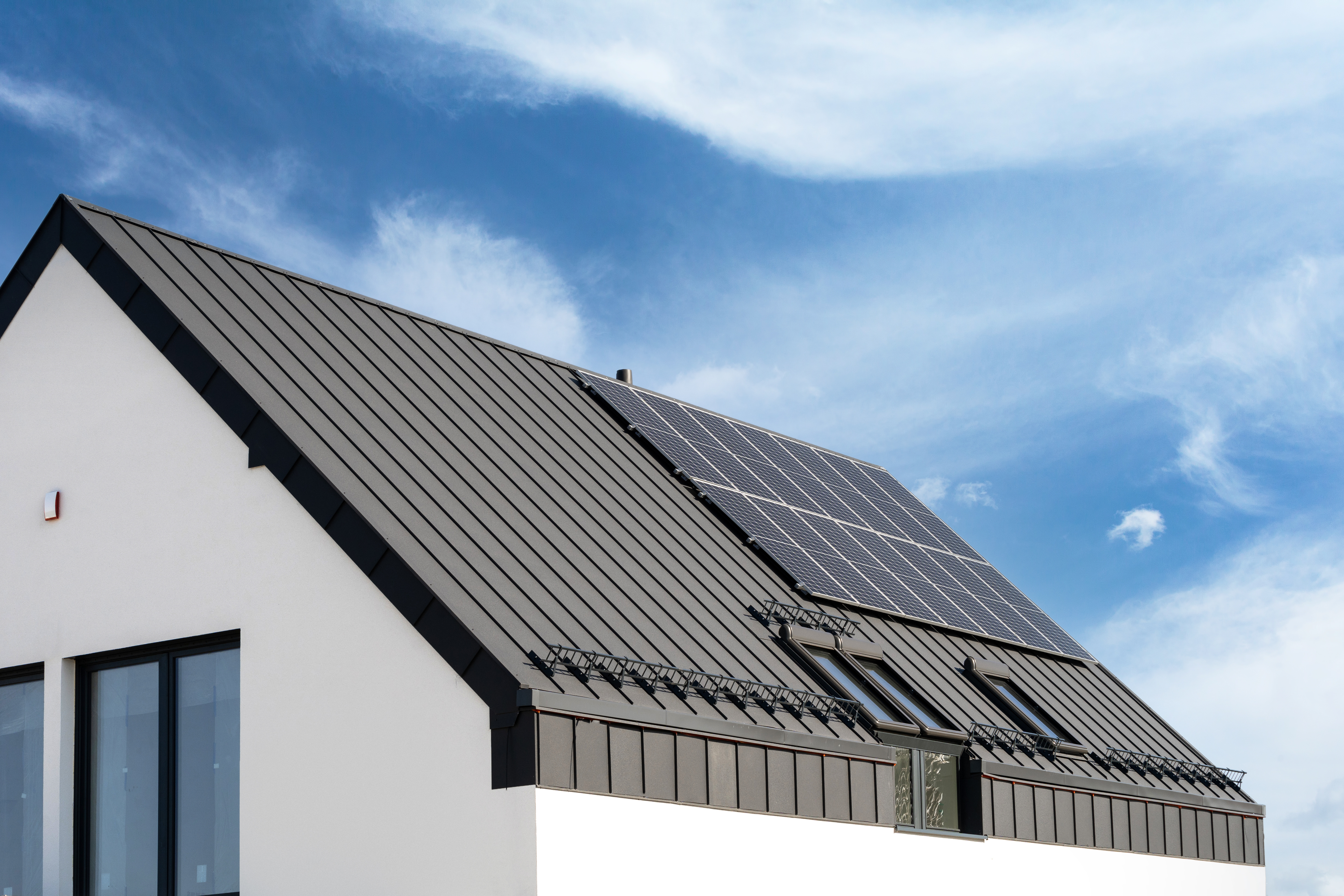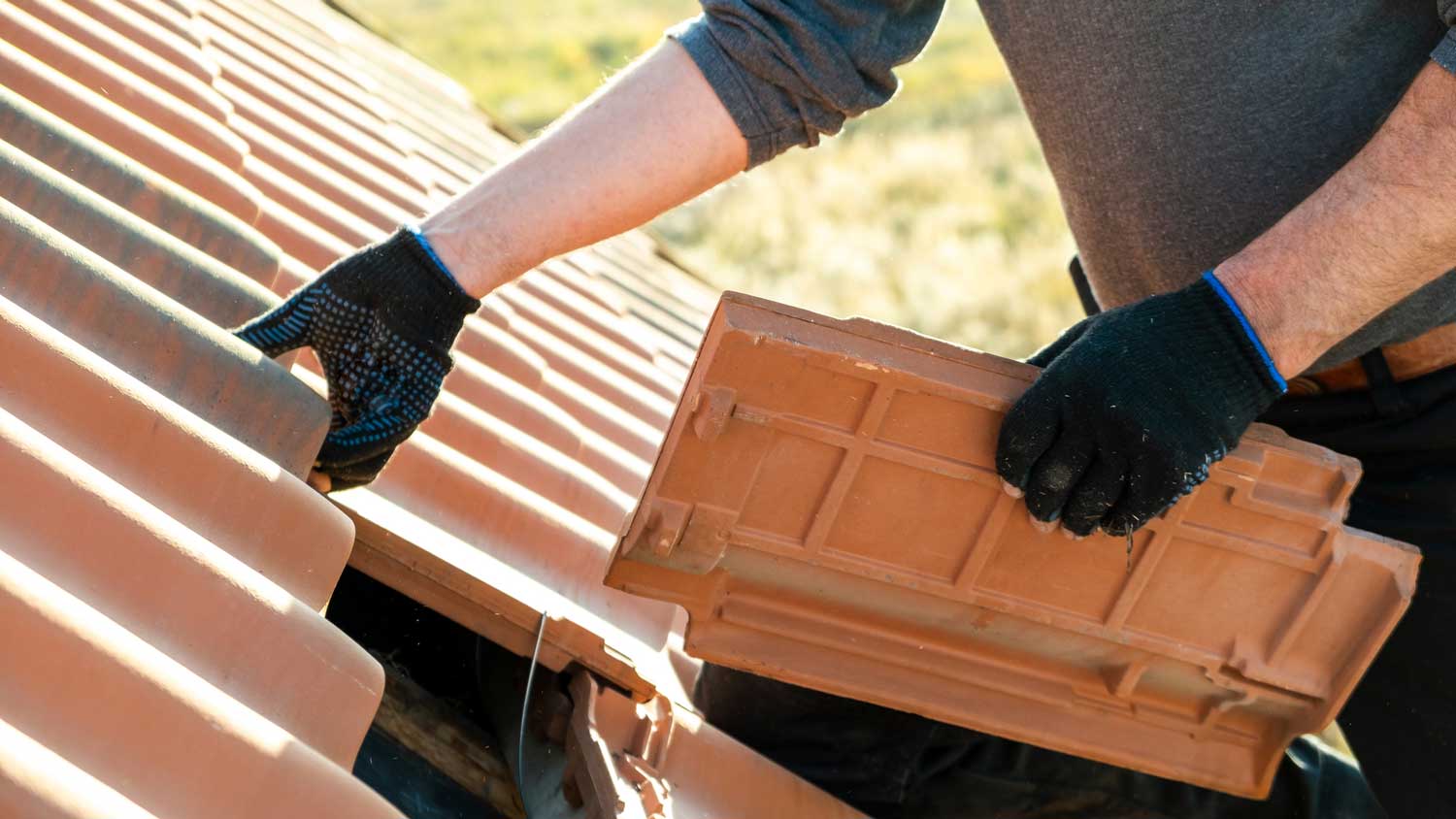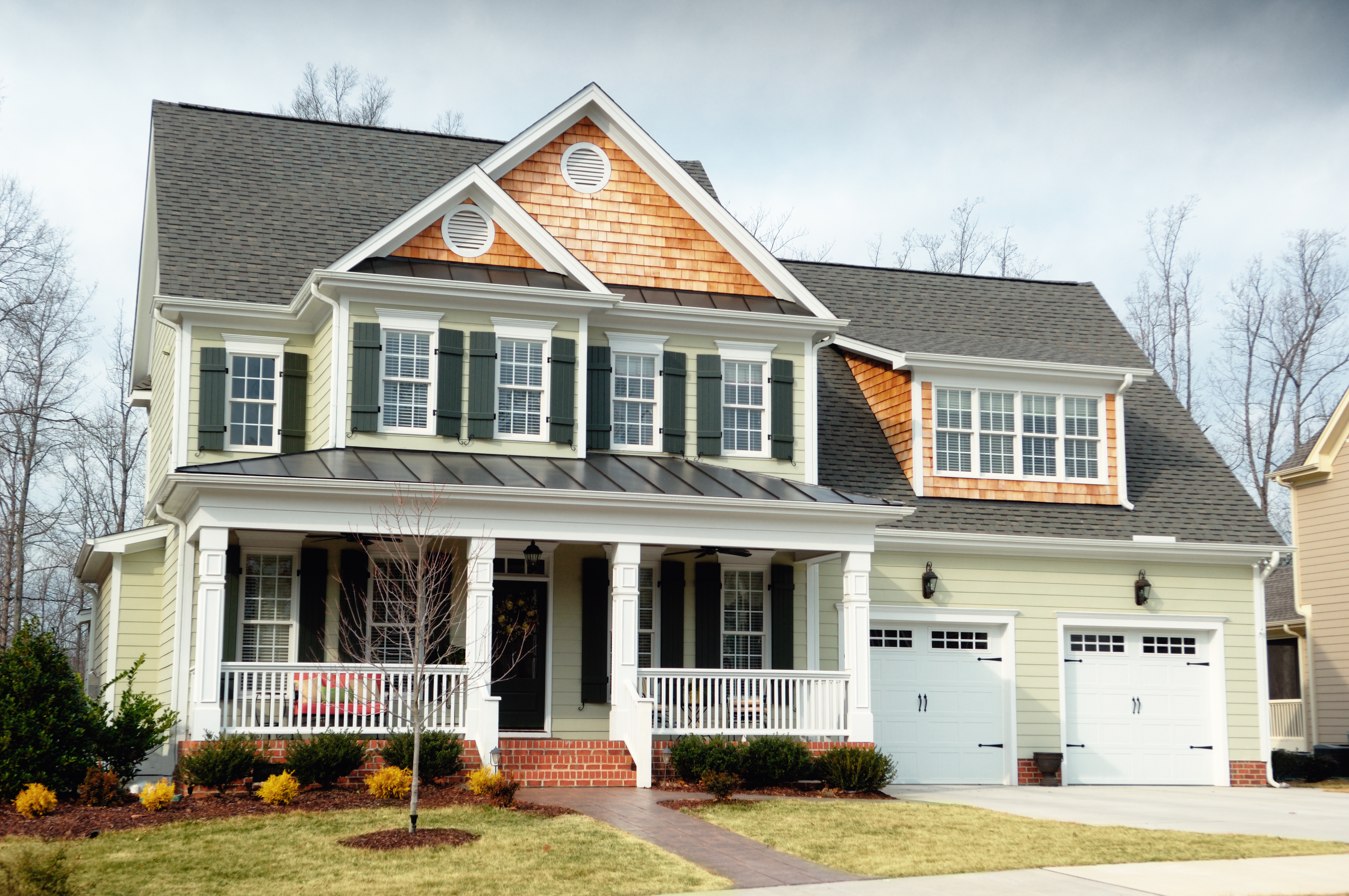
A metal roof can defend your home against Ohio’s varying weather conditions. Learn how much a metal roof costs in Columbus, OH.
From the size of marbles up to grapefruits, hail brings a variety of impact


1-inch (or quarter-sized) hail is considered severe.
Hail can be as small as 1/4 inch or as large as 3 1/4 inches and up.
One storm can feature many different hail sizes.
Larger hail falls faster and is more impactful.
Repairing hail damage on a roof costs between $375 and $7,500.
Hail might be frozen raindrops—or supercooled water—but the pelting on your roof can pack a punch and cause some damage. Depending on the size and duration of the storm, your roof may even need an inspection to assess the damage. Here’s what to know about what size hail will damage a roof.

The National Severe Storms Laboratory (NSSL) breaks down hail sizes into categories comparable to commonly found items. Here’s what to know about everything from 1/4-inch hail (pea-sized) to 1 3/4-inch hail (golf ball-sized) and up.
1/4 inch is about the equivalent of a pea. This size of hail could be potentially damaging but is unlikely to cause major holes and tears in roofing since it’s the smallest measurable variety and can be blown away by horizontal winds. With minimal impact, it’s most likely to leave a quick-melting mess on your lawn.
The next commonly found hail is comparable to a mothball in size, or about 1/2 inch. This size is still not large enough to do a ton of damage on its own—unless there are accompanying high winds or it’s super dense. This hail diameter falls on the smaller end of the spectrum.
Penny-, nickel-, and quarter-sized hail can have a damaging impact. According to the NSSL, anything quarter-sized (or 1 inch in diameter) is considered “severe.” Storms with hailstones that are 1 inch in diameter or greater are considered severe storms and are likely to inflict shingle or material damage.
Needless to say, when the diameter is equivalent to ping-pong-ball-sized hail and up, it’s going to carry some literal weight. The damage potential is high at this size, and larger hail will tear through shingles and window frames and crack concrete roofs. Split or knocked down trees, wooden and brick wall damage, and other serious risks are associated with super hailstorms (when hailstones are 3 1/4 inches in diameter and up).

Hail sizes can vary during one storm. The larger the hailstone, the greater the risk and damage potential. During a storm, rain travels into cold atmospheric areas and freezes. Eventually, the size of the hailstone weighs it down, and it falls toward Earth, gathering speed.
Other weather elements can impact hail damage, too, including wind speeds and direction. Horizontal winds can carry hailstones at a sideways angle that can batter your home’s siding, chimney, gutters, and flashing. When this happens, there can be noticeable damage to your home’s roof and exterior. Here are some ways hail damage is bad for a roof, telltale signs of hail damage, and what size hail is commonly to blame.
Hail that’s 3/4 inches in diameter may not be large enough to cause widespread damage on your roof, but it can wreak havoc on gutters and screens around your house. These smaller points can add up to a larger problem for your home’s functionality. Broken gutters make it harder to direct water away from the exterior or manage water and keep the flow of debris and leaves moving away from your roofline after a storm.
Roof shingles are coated in granules of small, colored minerals. Hail can knock loose these granules during storms, especially if your roof is older and already has some wear from weather and age.
You’ll know your roof has experienced granule loss if you see granules at the end of downspouts and in gutters. If the granule loss is extreme, you may see bald spots on your shingles.
This is more than just a cosmetic issue. Shingles with missing granules are more susceptible to UV damage, water infiltration, water damage, and decreased energy efficiency. Simply put, losing granules decreases the effectiveness and life span of your shingles and entire roof.
Shingles are hardy, but they can crack under direct impacts like those from a hailstorm. Large hailstones, older and deteriorated shingles, and sudden temperature changes are all risk factors for shingle cracks.
There are three common types of shingle cracks:
Minor surface cracks are on the top surface of shingles. They may not cause leaks at first, but over time, they can worsen and begin to leak.
Through cracks go all the way through the entire shingle. These let water leak through and into the underlying roof structure, which can cause water damage to the roof and your home.
Tear cracks are a combination of cracking and tearing due to long, jagged cracks caused by hail. These compromise shingles and your roof’s waterproofing layers.
After a hailstorm, have a roofing company look at your roof for shingle cracks. If they see cracked or torn shingles or other problems, have them fix them as soon as possible to prevent leaks that can cause water stains, mold growth, and structural problems. If the damage isn’t bad enough to require a new roof, a local roof sealing company may be able to help you seal out leaks and water damage and prolong your roof’s life span.
Hail damage on a roof often looks like missing and dented shingles, one of the most common hail damage signs. Insurance adjusters will commonly look for dents, dings, and missing shingles. Granules from the shingles may have also rolled down and collected in your home’s gutters. Typically, 1-inch hail is a culprit of missing shingles and significant roofing disruption.
Larger hail that’s ping-pong-ball-sized (1 1/2 inch) can rip through shingles and right past the lining of your roof, which is responsible for keeping out moisture and helping the roof retain its weather-resistant, energy-efficient properties. If the underlayment and sheathing are damaged, you’ll need repairs or replacement ASAP so that water doesn’t get into your attic insulation and drip down through your ceiling, damaging finishings, walls, and flooring.
If you have a metal roof and wonder what size hail can damage it, 1-inch hail will do the trick. However, metal roofs hold up better than their shingled counterparts, especially metal roofs that are 26 gauge or thicker.
Most types of asphalt shingles have adhesive strips that help secure them to your roof, along with roofing nails. If that adhesive strip fails to adhere correctly or separates from the other shingles due to hail or other weather, the shingles can lift up or become loose. You might see flipped-up or lifted shingles, hear shingles flapping in the wind, experience roof leaks in your home, or even see the sealing strip adhesive if you look up at your roof.
It’s vital to fix shingles with sealing strip separation or failure, as shingles that aren’t adequately adhered can be torn off by wind, leak, or cause your roof to fail sooner.
Most homeowners insurance plans cover hail damage and may help you recoup some costs around repairing or replacing the damaged roof. If you’ve experienced a severe storm and are curious if your roof needs repair or replacement, a roofer near you can provide an initial assessment and get an insurance contractor involved if there seems to be significant damage. The average cost to repair hail damage on a roof ranges from $375 to $7,500.
If your roof has significant damage, an insurance adjuster will come to evaluate it and start a hail damage insurance claim. Document as much damage as possible and speak to your insurance immediately.
From average costs to expert advice, get all the answers you need to get your job done.

A metal roof can defend your home against Ohio’s varying weather conditions. Learn how much a metal roof costs in Columbus, OH.

Dealing with a visibly damaged roof or leak? Learn about roof repair costs in Columbus to see how much you’ll need to budget for a permanent solution.

Learn about roof replacement costs in Columbus and what factors are at play to budget accurately and make sure you’re getting a fair price.

It's hard to walk down the street without spotting a gable roof. Here are the main pros and cons of gable roofs and how they stand up against the elements.

You may wonder what fascia is on a house. Our guide explains what you need to know about this important part of your roof and what purpose it serves.

An attic without proper ventilation can cause a number of roofing problems, inside and out. Here’s how you can tell if a poorly ventilated attic is wrecking your roof.